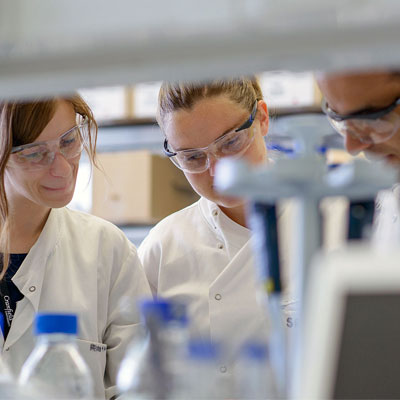In Europe during 2001, 17% of the population were over the age of 65 and estimates suggest that by 2035 this figure will reach 33%.
The steady increase in lifespan and the declining birth rate has produced a population whose demographic profile is skewed towards older individuals. This could prove problematic financially and socially as recent studies indicate that older members of our society are now affected by more than one chronic disease, with many having on average five different co-morbidities.
Consequently we need new methods of monitoring and maintaining the health of this population, and this will require a shift in our methods of management making use of new technologies. These new technologies will be generated by those with an understanding of biomedical engineering, a subject which sits at the interface between medicine and engineering, and which will provide the techniques and technology for future healthcare workers.
We offer a flexible approach to meet the needs of our commercial clients. The following services are available:
- Development of research proposals in close consultation with our industrial partners
- Confidential industrial research under contract.
About our research
Research in biomedical engineering is currently centred on the development of devices, which can be used to identify change in an individual’s health status. These may include devices to diagnose specific illness or theranostics tools which combine diagnostic and therapeutics release or devices for remote monitoring of individuals.
Diagnostic devices include those which identify and quantify a specific molecule associated with a disease whilst remote monitoring devices measure an individual’s vital signs (temperature, pulse rate, respiration rate etc) and then transmit them to a central server where they can be digitally triaged.
Cranfield staff have played a major role in the development of the two most commercially successful medical diagnostic devices:
• biosensors for self-monitoring of diabetes
• pregnancy tests based on lateral flow technology.
Facilities and resources
The Biosensors BioMEMS and Bionanotechnology Laboratory (BBBL) focuses on the following themes:
• Development of micro/nano-sensing platforms for various chemical and bio-analytes, including optical, electrochemical, mass-sensitive and magnetic sensing mechanisms
• Development of various robust, low-cost, easy-to-produce recognition receptors spanning technologies like DNA aptamer, peptide/protein domain, bacteriophage and other bioproducts
• Integration of recognition receptors within novel micro/nano-sensing platforms; and Engineering of “smart” molecular targeting moieties for in vivo molecular imaging and diagnostic
• Development of novel lab-on-a-chip systems, leading to next-generation sensing devices for biomedical applications.
Our research is carried out in the Vincent Building which contains 800m2 of new laboratory space on two floors. The laboratory has ample bench and cabinet space and well-equipped with state of the art equipment which enables groups to carry out studies in tissue culture, molecular biology, bacteriology, biochemistry polymer and electro-chemistry. All of the laboratory areas are rated for use of Class II material.
The laboratories are registered to work with genetically modified organisms, drugs/drug precursors, and operate under ISO14001. Investment by the University, including successive rounds from Science Research Investment Fund (SRIF), has provided new analytical equipment including LC-MS/MS TOFT, NMR and con-focal microscopy.
Industrial and Research Council funds have provided GC-MS, HPLCMS, SIFT-MS, Optical Coherence Tomography (OCT), electronic noses, robotics equipment, full molecular facilities and a separate cell culture facility.
